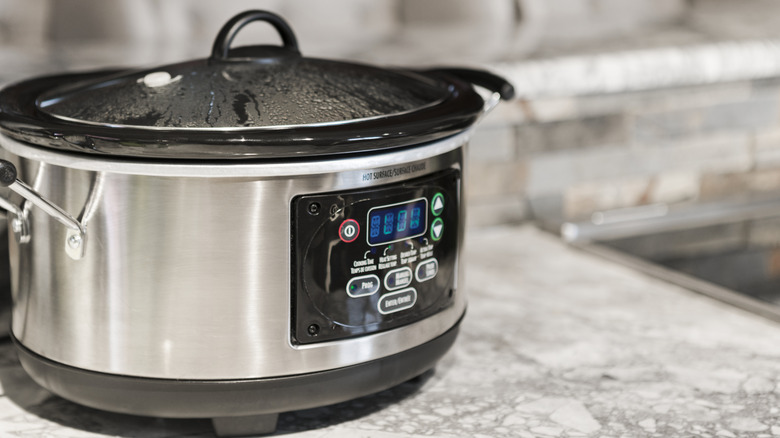How To Understand The Temperatures On A West Bend Slow Cooker
The slow cooker is the premium kitchen tool to transform a cut of inexpensive, tough meat into a flavorful, juicy dinner. By cooking at low temperatures for long hours, the West Bend slow cookers provide a convenient way to prep for dinner in the morning, and that dinner will be sit-down-and-eat ready by evening with no additional stress required from you. However, like any other cooking appliance, you need to understand the West Bend slow cooker temperatures to create your meal successfully.
Slow Cooker Heat Settings
Slow cookers have truly simplified the cooking process by generally only allotting for two cooking modes: low and high. However, many West Bend slow cookers also have a medium temperature setting. These settings fall in the following temperature ranges:
- Low: 180 to 200 degrees Fahrenheit.
- Medium: 230 to 270 degrees.
- High: Around 300 degrees.
The West Bend slow cooker assigns temperature settings to the numbers one through five:
- 1: This setting is exclusively used for warming breads and dinner rolls.
- 2: The warm setting keeps fully cooked foods warm until it's time to eat. Never attempt to cook raw foods on the warm setting, as they will be unsafely undercooked.
- 3: Low-heat cooking.
- 4: Medium-heat cooking.
- 5: High-heat cooking.
Oven vs. Slow Cooker Times
Most of your favorite oven-baked meals can be converted into a slow cooker recipe. To figure out how long you should cook in the slow cooker and at what setting, look to the following conversion times:
- 15 to 30 minutes in the oven would equal four to six hours on low or one-and-a-half to two hours on high in the slow cooker.
- 35 to 45 minutes in the oven equals six to 10 hours on low or three to four hours on high in the slow cooker.
- 50 minutes to three hours in the oven equals eight to 16 hours on low or four to six hours on high.
Whether you're trying a new recipe or cooking one that's in your regular rotation, always check your food for doneness with a thermometer. This is the fail-proof way to know that you aren't consuming undercooked food.
Best Slow Cooker Tips
It's extremely difficult to mess up a slow cooker meal since there's so little interaction with the process after the ingredients are dumped into the housing, but it's still possible to end up with a dry or undercooked dish after all that time cooking. These pro tips will keep your meals perfect straight out of the slow cooker.
When your slow cooker has hit a nice simmer midday and the savory smell wafts through the house, resist the urge to open the lid and inhale. Slow cooker lids seal on so the moisture stays within the housing. Impatient cooks who open the slow cooker too often release that moisture and might end up with a dry dish.
Keeping all that moisture in mind, slow cooker meals typically don't need too much added liquid. If you're following an oven recipe that calls for a certain amount of water or liquid to be added to the dish, reduce that liquid amount by half for the slow cooker or your end result will be too soggy.
Finally, time your vegetable placement. Fresh vegetables take longer to cook, so put them in the slow cooker first so they can be close to the heat. If you're working with frozen vegetables, put them in the housing for the last hour of cooking — just enough time to thaw and cook without disintegrating.
